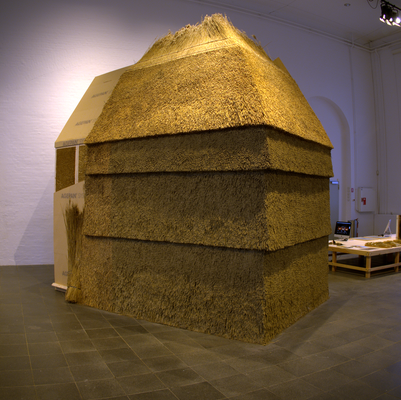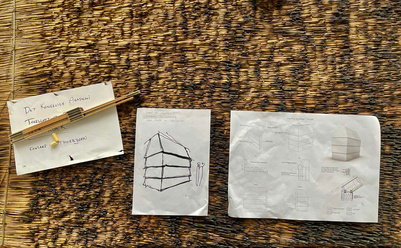A group of international researchers are set out to develop an intelligent building grown from mycellium and capable of adaptively reacting to changes in light, temperature and pollution. The project is funded by EU with 2.8 mio Euros, whereof a third is allocated to CITA, Centre of Information Technology and Architecture at KADK.
A revolutionary new type of intelligent building grown from mycelium and capable of adaptively reacting to changes in light, temperature and air pollutants will be developed in a new research project funded by the European Commission’s Future and Emerging Technologies (FET) programme.
The Fungal Architectures (FUNGAR) project has received 2.8m Euro over three years, and draws together a diverse cross-disciplinary consortium of experts from Architecture (CITA), Computer Science (Centre of Unconventional Computing, UWE Bristol, UK), Mycology (Utrecht University, Holland) and Industry partners MOGU, Italy.
Controlling lights and heaters
The project will see living organisms and computing functions fully integrated in a structurally and environmentally performing building fabric. Using a novel bio-electric system, living fungi grown inside the building’s framework structure will act as a sensor detecting changes in light, pollutants and temperature, and computers will analyse the information. When particular changes are recognised, the system will have the potential to respond adaptively by controlling connected devices such as lights and heaters. By using fungi as an integrated structural and computational substrate, these buildings will have low production and running costs, embedded artificial intelligence and be bio-degradable when no longer in use.
CITA’s expertise in advanced modelling and simulation, materially informed design and robotic fabrication will be used in the project to develop novel mycelium moulding methods together with architectural design rules based on material performance.
Mycelium network with computing capabilities
Associate Professor Phil Ayres, a researcher at CITA who will be Principle Investigator on the project, said: “This is a highly ambitious and exciting project that targets the development of radical new construction and building technologies. These technologies seek to harness the properties and capabilities of living organisms and steer them towards architectural objectives.”
“Our goal is to develop the ‘know-how’ for growing buildings in-situ, using mycelium. Together with our partners, we will be functionalising the mycelium network to exploit its inherent computing capabilities. This means that the living building material will act as its own parallel computer for environmental regulation and adaptation.”
Professor Mette Ramsgaard Thomsen, Head of CITA, said: “This project will help lay the foundations for an entirely new field of research that promises to disrupt current resource intensive and extraction based methods of construction, as well as offering a radical alternative to current paradigms of ‘intelligent buildings’.”
Smart tech in living architecture
Mycelium based products for the construction industry are already available on the market but existing approaches involve growing the organism to the required shape in small modules as bricks, blocks or sheets. These are then dried to kill the organism and produce a stable, inert composite. -
In the Fungal Architectures project, the mycelium will be living and combined with nanoparticles and polymers to make mycelium-based electronics. This computing substrate will be grown inside a stay-in-place woven mould to give shape and provide additional structure. The functions of this living, organic and computing composite will be showcased during the project by growing a full-scale demonstrator building.
Lene Dammand Lund, Rector of KADK, said:
”We need alternative thinking in the construction industry, both when it comes to raw materials and CO2 consumption. The FUNGAR-project hits the spot what both challenges are concerned. It demonstrates how research at KADK addresses the big global challenges expressed in the UN development goals."
Fungal Architectures is the second EU Future and Emerging Technologies funded project for CITA that focuses on integrating living complexes in novel architectural technologies. It follows on from the recently completed and award winning Flora Robotica project.
“Together with our partners, this is a tremendous opportunity to extend our expertise in developing novel architectural bio-technologies, and it helps consolidate KADK’s and CITA’s position at the forefront of this pioneering field.” added Phil Ayres.
The academic partners in the project are UWE Bristol in the UK (coordinating partner) and Utrecht University in Holland. The industry partner is MOGU, a mycelium-based technologies company based in Italy.
The project creates three positions within CITA. The first one - a PhD fellowship - is already advertised.





